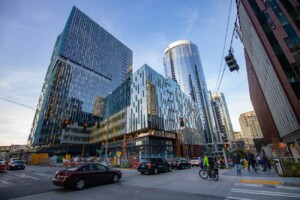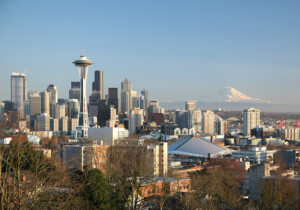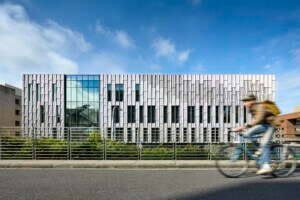The Landmarks Preservation Board (LPB) in Seattle has nominated the former Seattle City Light Power Control Center, located at 157 Roy Street on Lower Queen Anne, to become a city landmark.
Designed by architecture firm Harmon, Pray & Detrich in 1962, and completed the following year, the building, which is now a homeless shelter, echoes the modernist styling of Le Corbusier’s Villa Savoye, practiced in the Pacific Northwest by the likes of Paul Thiry and Pietro Belluschi.
The application to the LPB, compiled by The Queen Anne Historical Society and its President Michael J. Herschensohn, argues that the building’s significance ties in with Seattle’s Century 21 Exposition held in 1962. It also adds that the “Power Control Center reflects the futuristic enthusiasm of the fair that survives today in two designated city landmarks, the Space Needle by John Graham and Victor Steinbreuck and Minoru Yamasaki’s Pacific Science Center.”
“The creative and unusual pairing of eight and six-sided forms is a noteworthy feature of the Power Control Center which is not only an exceptional example of the modern movement, but also of the unique blend of European and American design traditions that flows from Louis Sullivan to Frank Lloyd Wright and which is clearly seen in the work of Bruce Goff such as the Japanese Pavilion at LACMA and other Southern California mid-century architects,” the application says.
While using concrete massing synonymous with the European modernist movement, the former Control Center, in the eyes of Herschensohn also represents “the efforts of American designers to break free of European design and create a uniquely American vocabulary.”
The board voted unanimously in a 10-0 majority to put forward the site, exterior and interior of the building for landmark status meanwhile, another meeting is set to be held on June 15. “The Power Control Center and its site much like Le Corbusier’s 1929 Villa Savoye and his Cité de Soleil in Marseilles integrate the requirements of the automobile age by including parking under the building between the pilotis supporting the office segment of the center.”










